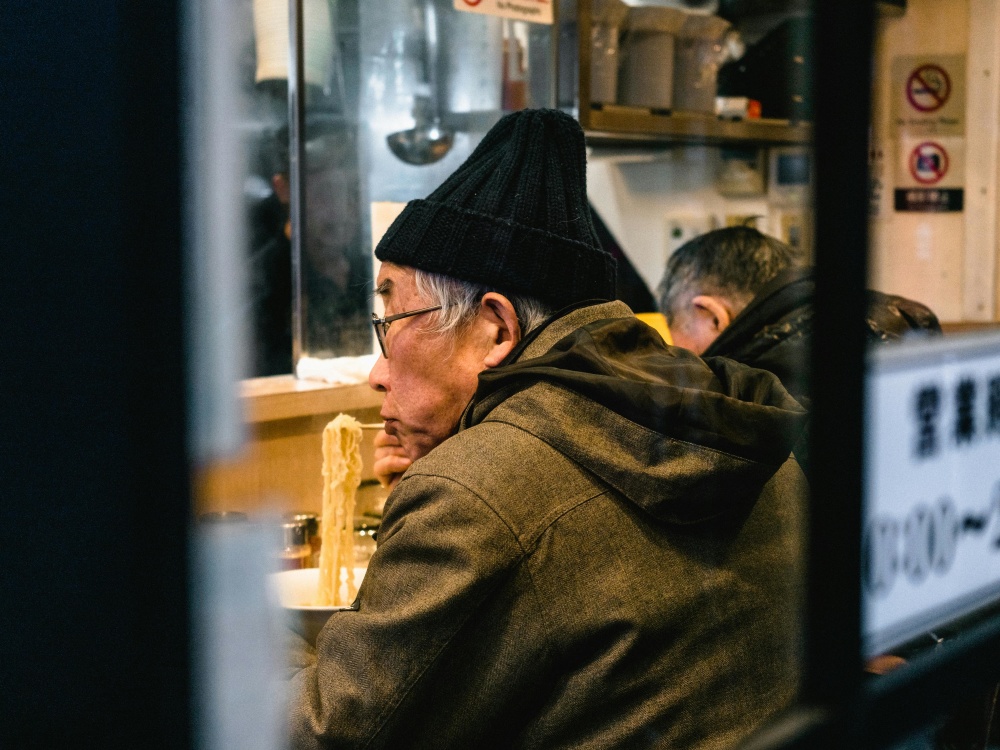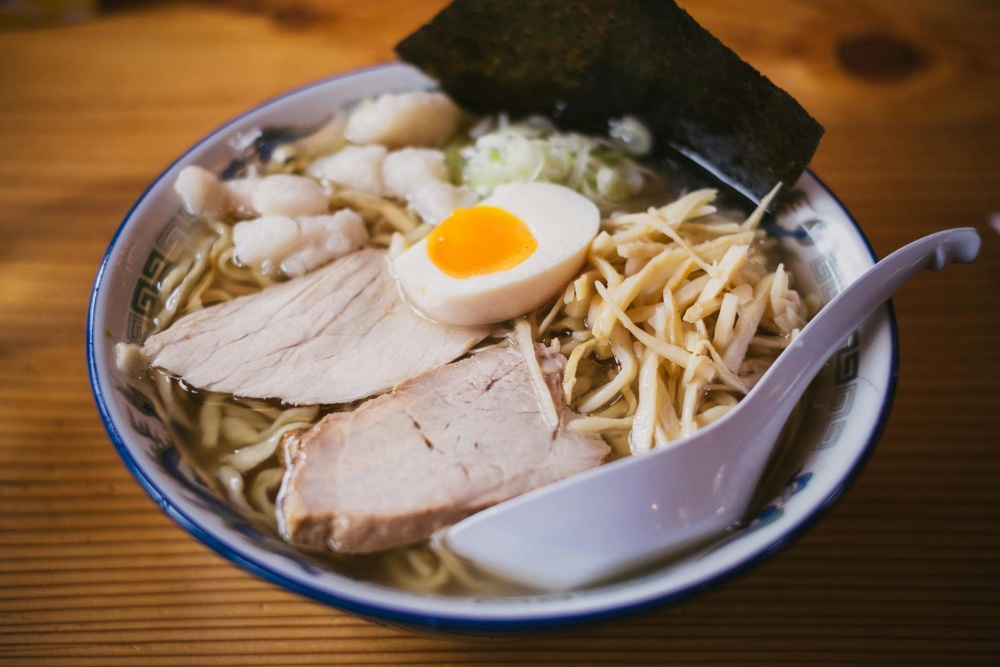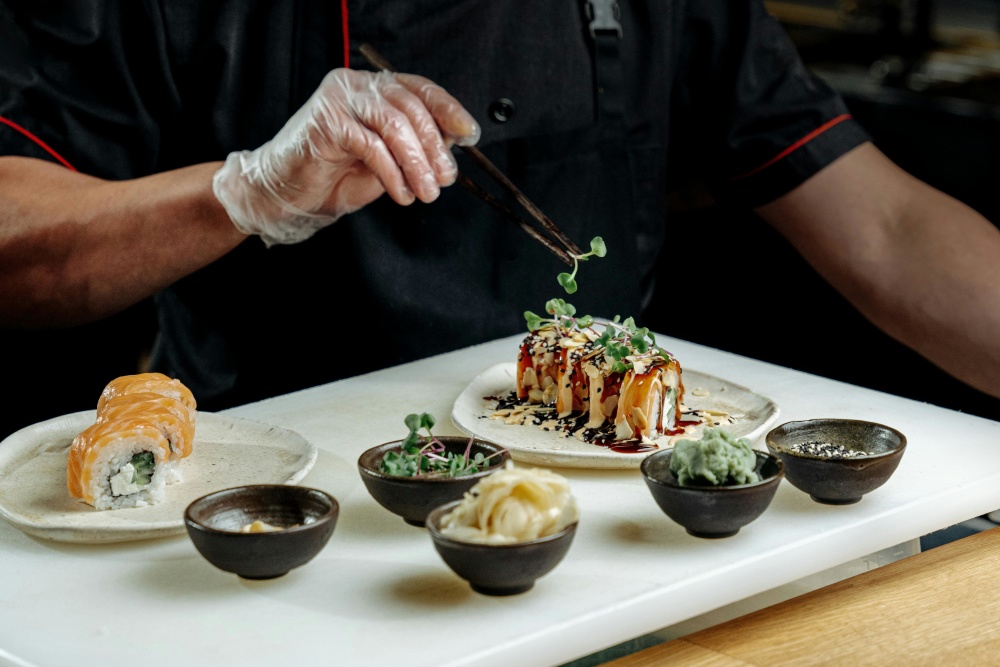Updated August 27, 2024
How To Order in Japanese: A Restaurant Walkthrough
As a foreigner living in Japan, ordering food at a restaurant can feel intimidating, especially if you don’t speak the language.
There’s also the fact that Japan has a distinct culinary culture. You might not be familiar with all the dishes or even some of the ingredients, but don't be dissuaded.
In this guide, I’ll walk you through the usual experience of restaurants and bars (or "izakaya") in Japan. Step-by-step, I’ll take you through the front door, tell you what to say, and how to order in Japanese.
I’ll even teach you a few common Japanese words you can use when dining out to spice things up and provide tips to help those with dietary restrictions order with peace of mind.
Let’s start by introducing the types of Japanese restaurants, as we’ll often refer to them throughout the guide.
In this article: 📝
A Brief Introduction to Japanese Restaurant Types
One of the most popular restaurant types is an izakaya. Similar to a pub, this is a place where you can drink and eat food. The food here is usually finger food or shared plates, but you also have some grilled dishes. Izakayas are less formal than a sit-down dinner at a proper restaurant, but the intimate setting is why they’re popular among friends and colleagues.
Family restaurants, on the other hand, are quite common and serve a range of Japanese, Western and sometimes Chinese and Italian dishes. Aptly called “famiresu,” families with children usually frequent these.
Then there are shokudo, which you’ll see located around various places in the city and in the countryside. These smaller and affordable establishments, which are also suitable for families, tend to specialize in an array of Japanese comfort foods such as soba, katsu, curry, or udon.
Teishoku-ya are also small establishments, but these are known for their set menus that usually include a meat or fish main dish, rice, and soup. You can find these around business centers and in parts of town where many people go to work.
Lastly, another distinct type of Japanese restaurant is a kaiseki ryori or ryotei. A kaiseki ryotei is on the “fancier” side, offering multiple-course meals and a rich dining experience. You can find Kaiseki Ryori at many Ryokans, which are traditional Japanese hotels usually found in hot spring (onsen) towns.
While the abovementioned establishments are arguably the most distinct ones, there are many more Western restaurants, cafes, and fast food chains as well, but these don’t really need an introduction.
Walking Into The Restaurant: How Many People Are In Your Group?
Now that you know your Japanese restaurants, let’s start by walking you into the restaurant.
While some restaurants might require a reservation beforehand, which you can do online in most cases, many accept walk-ins, as long as they’re not constantly crowded or exceptionally fancy like a Kaiseki Ryori.
No matter the restaurant type, upon entering, the question you’ll likely hear first will be: How many people are in your group? (Nan mei sama desu ka?, 何名様ですか?)
I’d like to emphasize “desu” here, as you’ll likely need to speak in a formal tone when speaking to the restaurant staff.
Now, you want to tell them how many people you are, but this requires an explanation of its own.

Counting People in Japanese
In Japanese, counting things isn’t so simple. You have different words to use when counting different things, and the same applies to counting people. There are even polite and impolite ways to count.
The “mei” counter is a formal way to count people, making it perfect for a restaurant setting!
As we’ve seen above in “Nan mei sama desu ka?”, mei is used with the word “nan,” which means “what” to ask “how many?”, as in the number of people.
When responding to the question, you have a couple of options. While mei is a formal way to count people, you also have “nin,” which is a less formal counter for people.
Since “mei” is more formal, it’s common for the restaurant staff to use “mei” when addressing the customers, and typically the customers use “nin” to refer to themselves.
That said, there is no exact right or wrong. So I recommend using mei as it’s easier, as long as you know how to count up to five or ten in Japanese. All you need to do is add mei after the number, but remember to be polite!
We’re two people: Ni mei desu.
Unless it’s a fancy place, you can very well use the “nin (にん)” counter, too. However, this time, the word you use first changes depending on the number. Here’s how it goes:
One person: ひとりす(hitori desu)
Two people: ふたりす (futari desu)
Three people and above: The number + にん(nin) i.e. Five people, ごにんす (go nin desu)
Of course, if you don’t speak Japanese and want to be absolutely sure that you’re saying the right thing, you can also show the number with your fingers, which is universally understood.
Being Seated and Receiving The Menu
Once you let the person greeting you know how many people will be eating with you, you’ll be escorted to a suitable table. Upon reaching the table, the waiter will likely say something like こちらへどうぞ (kochira e douzo), which means “Please be seated.”
As you take your seat, the waiter will also bring you the menu, saying, “Here’s the menu” or “メニューになります (menyuu ni narimasu).” You can now check out the menu and decide on your order.
Your waiter will leave at this point, and you’ll need to get their attention once all of your party members are ready to order. Before leaving, your waiter may also say “お決まりになりましたらお呼びください" (Okimari ni narimashitara oyobi kudasai) or “please let me know when you’re ready to order”, and you can respond with a simple thank you or Arigatou.
How To Get The Waiter’s Attention
When you decide what to order, it’s time to call the waiter to your table and let them know what you want to eat. However, depending on the restaurant and setting, you may need to get the waiting staff’s attention in different ways.
For instance, if it’s a loud and busy izakaya or bar, calling out loudly (すみません, Sumimasen) across the restaurant so that the staff can hear you is totally normal. This also goes for ramen shops that are always busy and crowded.
However, if there are only a few tables seated with very few people in the room, or if it’s a quiet, fancy restaurant, this will be rude. Instead, you can try non-verbal ways to get attention.
For instance, the safest way is to make eye contact with the staff and gently gesture with your head. They’ll know you need something and come right up to you.
Alternatively, raising your hand or, once again, saying “Sumimasen”, which means “excuse me”, should also do the trick if they don’t seem to notice you.

How To Order Food in Japanese
If you’re just ordering a simple, common dish without any modifications and only for yourself, all you need to do is say the name of the dish and end with a “please” or kudasai (〜ください). If there are multiple items you’re ordering, you can add them back to back with a と or “to” in-between, which means “and.”
So, a simple, creamy, pork broth ramen and beer order sounds like this:
とんこつラーメンとビールください。(Tonkotsu ramen to bīru kudasai)
However, this is the most basic way to communicate your request. When ordering, you may need to speak in full sentences, order on other people’s behalf, or order multiples of the same dish.
To order just one ramen dish using the longer form of the sentence sounds like this:
ラーメンを一つお願いします。(Ramen wo hitotsu onegaishimasu)
So, all you need to do is say the food name, then “wo” and “hitotsu,” which implies “single quantity” according to the tsu counter (which I’ll explain below), and end with a “please”, which, in this case, is “Onegaishimasu” but “kudasai” also works.
That said, if the quantity of the food goes up, things get a bit more complex. This time, you’ll need to decide whether to use the "個 / ko" counter or the "つ / tsu" counter, both of which are counters for general use.
Ko and Tsu Counters, Explained
If you’re ordering multiple servings of the same dish or a drink, the easiest counter to use of the two is the “ko” counter. Once again, this is as long as you can count up to five, ten, or twenty.
To use the ko counter when ordering, join the number with the “ko” suffix at the end. For instance:
One, or Ichi, becomes “ikko”
Two, or Ni, becomes “niko”
Three, or San, becomes “Sanko” … And so on.
The “tsu” counter works differently and is actually the more common way to quantify items, so it’s better to learn it sooner rather than later.
Here’s a cheat list that includes all the numbers up to ten according to the “tsu” counter:
One: hitotsu
Two: futatsu
Three: mitsu
Four: yotsu
Five: itsutsu
Six: mutsu
Seven: nanatsu
Eight: yatsu
Nine: kokonotsu
Ten: tō
As you can see, these may require a bit of memorization but are definitely worth learning if you’re living in Japan.
Notifying The Waiter About Your Dietary Restrictions and Allergies
If you have serious allergies or dietary restrictions, learning how to communicate this to the waiting staff just might be the most “vital” information in this article. So, listen up.
Communicating Your Allergies
If you have allergies as a foreigner in Japan, I have both good and bad news for you.
First of all, you’ll be glad to know that allergies are taken very seriously in Japanese restaurants. So, carrying a card that specifies your allergies will be enough most of the time.
The bad news is that if your allergies are related to seafood and shellfish, you’ll need to exercise extra caution. As you may know, fish, seafood, and shellfish are used prominently in Japanese cuisine, be it in sauces or as part of many main dishes.
If you’re allergic to these, I recommend not sitting in small restaurants or sitting as far away from the kitchen as you can to minimize exposure to shellfish or seafood steam due to lack of ventilation and airflow.
Also, in addition to carrying an allergy card around, it’s also worth learning the Japanese names for certain allergens. To avoid eating something you aren’t supposed to, you can say something like: “Sumimasen. (food name) wo taberenai desu. (food name) nashi de kudasai.” which means “Excuse me. I can't eat (food/ingredient). Please take out (food/ingredient).”
Here are some common allergen foods you can familiarize yourself with:
Wheat: Komugi
Peanuts: Rakkasei
Milk: Gyunyu
Crab: Kani
Shrimp: Ebi
Shellfish: Kai
Squid: Ika
Making Sure Your Food is Halal, Vegan, or Vegetarian

Not all dietary restrictions are life-threatening, but you should be treated just the same if you have other dietary restrictions, like being vegan or vegetarian or eating halal.
I actually have dedicated articles on both eating vegan and eating halal in Japan that you can check out if you want some good food/restaurant recommendations.
If you’re not in a specifically vegan or halal restaurant, you may need some items replaced or removed from your order. You can communicate this by saying the ingredient and then “nashi de kudasai” which, as I mentioned, means “Please take out the (food item).”
In addition, learning the following phrases can come in handy in more specific situations:
Watashi wa bejitarian/began desu: I’m a vegeterian/vegan.
Niku ka sakana ga haitte imasu ka?: Is there meat or fish in this food?
Kono tabemono wa hararu desu ka?: Is this food halal?
Kore wa buta-niku/osake haittemasu ka: Is there pork/alcohol in this food?
Pay Up: How To Ask For The Bill in a Restaurant in Japan
Considering your order came just as you wanted and you’ve enjoyed your meal, it’s time to pay the bill. How a bill is delivered to the table and paid changes greatly from culture to culture, and it is no different in Japan’s case.
If you’re at a ramen or teishoku shop, sometimes you’ll be required to pay upfront at a vending machine. The machine will give you a few pieces of paper, and you give those papers to the restaurant staff to put in your order. After you finish your meal, you can just clean up, say thank you, and leave.
In most other situations, to ask for the bill, you can get the waiter’s attention the same way you did before you ordered. Once the waiter comes to your table, you can simply say:
Okaikei wo onegaishimasu(お会計をお願いします): Please bring the bill
While this is how it goes for most family restaurants and fancy Kaiseki ryoris, less formal establishments like izakayas may handle the bill differently.
For instance, because izakayas are usually more casual, the waiter may bring the bill once they serve all of your orders. However, at some smaller restaurants, you may need to yell out “Excuse me!” (Sumimasen) and someone will come to your table.
Leaving The Restaurant: The Etiquette and What To Say
As you prepare to leave after paying, there’s one more cultural norm to keep in mind.
When you go to big eateries, chain restaurants, or fast food spots, you don’t usually see the staff making the food. However, Japan has many small authentic restaurants where you practically dine with the chef in the room.
These spots make the best, heartiest food, specializing in a certain dish type like ramen, and the people who make and serve them take pride in their food. At these places and at izakayas, thanking the staff for the food is common, and you can use the following phrases to partake in the culture yourself:
Gochisousama deshita: That was a feast!
Arigatō gozaimashita: Thank you very much.
Both of these phrases essentially mean “thank you for the food”, but I prefer the first option as it sounds more enthusiastic.
Closing Thoughts on How To Order Food in Japan
As I close out my guide to ordering food in Japan, here are some of my final tips for an overall smoother dining experience.
For one, as I explained in my tipping in Japan post, save for the extreme scenarios you’ll find in there, tipping is a no-go in Japan, and may even be considered downright rude.
Secondly, if you don’t have the time or can’t remember the words/phrases you learned here, you can always try and ask for an English menu. In most large cities, especially in central zones, many restaurants offer an English menu too, which you can ask for by saying:
英語のメニューはありますか? (Eigo no menyuu wa arimasu ka?): Do you have an English menu?
Lastly, don’t be afraid to ask for the waiter’s recommendation if you don’t know what to order. The staff will usually be helpful, and all you need to do is say “おすすめは何ですか?" (osusume wa nandesuka)” meaning “What’s your recommendation?”.
Overall, your dining or eating out experience in Japan should be delightful, so don’t stress about it. The staff will be more than accommodating in most places anyway – it’s the trademark of Japanese hospitality, after all.
Get Job Alerts
Sign up for our newsletter to get hand-picked tech jobs in Japan – straight to your inbox.








